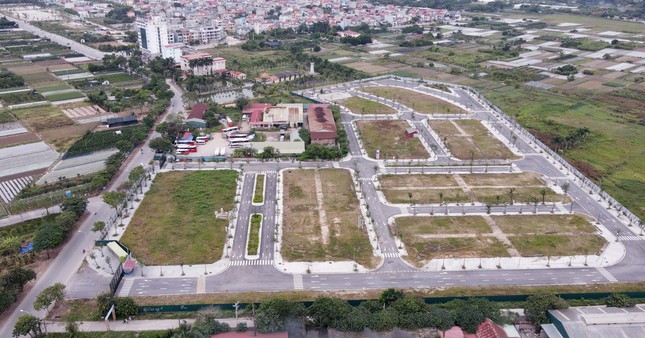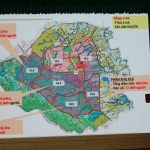Real Estate Price Index Needed
According to statistics, the average selling price of apartments has increased from 17% to 25% in just the first two months of 2024 compared to the previous year. This has made it difficult for young couples like Mr. Mai Viet Trung, even with a fairly high income, to find affordable homes. They have had to look in the outskirts for more reasonable prices but still faced high prices and poor quality.

Dr. Tran Xuan Luong, Real Estate, National Economics University
Mr. Trung shared that his wife and he had visited many apartments hoping to find one within their budget without having to take out a large bank loan to avoid a huge financial burden. However, some apartments had increased in price by 100-200 million just within a short period, causing a lot of headaches for the couple.
Dr. Tran Xuan Luong, a real estate expert from the National Economics University, pointed out that to determine the correct land and housing prices and to avoid “price madness,” a clear database and specific metrics are needed to identify whether the price set by the seller is reasonable.
In addition, developing an annual land price list based on market principles is an important and necessary step to adjust land values promptly to match reality.
Dr. Luong also emphasized the importance of establishing a real estate database, specifically creating a real estate price index to manage transactions and information related to each real estate segment. This will provide enough data to make informed judgments and valuations that align with market prices. These reforms will help eliminate inconsistencies in land valuation, contributing to a more transparent and efficient real estate market.
Dr. Luong stated that, looking at the market trend from 1993 until now, house prices can stagnate or drop by a few tens of percent, but when the market heats up again, it can double or even triple in just a few months.
He advised that homebuyers should not be overly worried. If they are buying a house to live in and are not using excessive financial leverage, they should not focus too much on the price per square meter. Instead, they should consider other factors such as buying a smaller house, especially focusing on technical and social infrastructure, amenities, convenience, and matching their actual needs.
Additionally, homebuyers should carefully consider factors such as construction quality, project legality, transportation connectivity, and surrounding amenities. These factors will directly impact their quality of life and the future value of their real estate.
However, it is essential for buyers to have a holistic view and make careful assessments before making decisions that align with their financial resources and family circumstances. They should avoid the mindset of buying a house at all costs, driven by the fear of missing out or price increases as seen in previous cycles. Although the government does not yet have a database or indices for real estate prices, they have implemented a series of measures and regulations to protect homebuyers’ interests in the coming time.
Rising House Prices Due to Supply Shortage
Real estate prices, especially housing and land, have been continuously increasing and are higher than the income of the people. This has made it difficult for low-income earners in urban areas and industrial zone workers to access and establish housing. In Hanoi and Ho Chi Minh City, there are hardly any apartments priced below 25 million VND per square meter.
Not only have land and apartment prices increased, but land prices are also currently fluctuating, especially in suburban areas. Recently, in an auction of 68 land lots in Ngo Ba, Thanh Than village, organized by the People’s Committee of Thanh Oai district, Hanoi, the starting prices for the lots ranged from 8.6 to 12.5 million VND per square meter for lots with an area of 60 to 85 square meters each. However, many lots were sold for prices ranging from 52 to 100 million VND per square meter.

Land prices are currently fluctuating.
Although located 30-40km from the city center, the land prices in this area are equivalent to the prices of luxury apartments in some central districts of Hanoi. This indicates a rising trend in land prices in suburban areas.
Experts warn that this could be a sign of a real estate price “pumping” tactic, creating artificial market heat and leading to the risk of “turning off” and canceling the deposit after winning the auction.
They explain that the cause of this situation is the shortage of apartment supply, especially in central areas, combined with the strong demand for home purchases in recent years. In addition, real estate speculation is also a major factor driving up housing prices.
At the same time, they emphasize that tightly controlling real estate speculation and encouraging the development of social housing will be crucial to stabilizing the Hanoi real estate market in the future.
According to the Vietnam Real Estate Brokers Association, the market is facing a shortage of supply, and there is also a large group of speculators, causing continuous price increases. Meanwhile, people’s average income tends to decrease due to economic difficulties, making it harder for most people to afford housing.
Therefore, stricter measures are needed to control this activity to prevent price increases and bring the market back to a stable and healthy state.
Additionally, encouraging the development of social housing is considered an important solution. Increasing the supply of affordable housing will help ease the pressure on the real estate market, thereby stabilizing prices. This will enable middle and low-income earners to have the opportunity to own their homes.
Government Initiates National Land Database Development
The government has recently assigned 5 departments to develop a national land database plan to integrate with the national population database.
Land Law 2024: Thoughts on Land Price Regulations
After an elaborate construction process, the Land Law (amended) has finally been passed by the National Assembly, raising hopes of resolving difficulties and obstacles in land management practices and helping unlock the potential of this crucial development resource. However, regarding land price regulations, the writer still has some concerns about their rationality and feasibility in the implementation of the law.




















